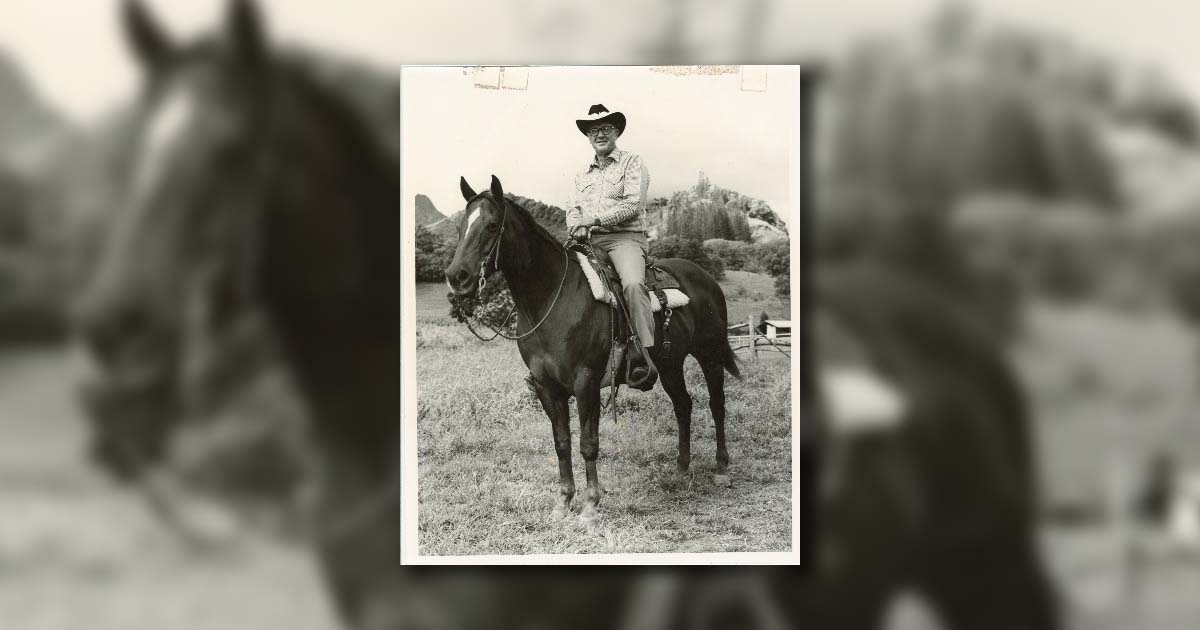
The Greenwells, a Paniolo Dynasty
The history of the paniolo begins not on horseback but at sea, with the ships that brought both cattle and cattlemen to Hawaii’s shores. In 1850, after failed attempts at sheep ranching in Australia, and gold mining in California, one Mr. Henry Nicholas Greenwell arrived into Kailua-Kona.
In Hawai‘i, Henry grew oranges with some success, until a blight in 1866 destroyed his orchards. In search of diversified crops, he took a voyage, visiting New Zealand, England, Brazil and elsewhere, along the way meeting future wife Elizabeth Caroline Hall. Together, they raised a family of six sons and four daughters (and 23 grandchildren).
Henry finally found success with coffee, and is credited with putting Kona Coffee on the map in in 1873, at the World’s Fair in Vienna. Some of the family’s original orchard is still growing at Greenwell Farms in Kealakekua. He acquired large tracts of land in the Kona District, some of which were well suited to cattle ranching, which two of his sons took on as a lifestyle.
Today, many Greenwells are on the Paniolo Hall of Fame Roster, including Henry’s four grandsons, Sherwood Robert H. (2002), Robert Francis (2013), Leonard Radcliffe “Rally” (2017), and James Mallaby (2001), and great-grandson James “Jimmy” Greenwell (2013), James’ son.
In 1915, Henry’s grandson James was born at the family home in Honokohau. He remembers growing up alongside two brothers and two sisters in the large house with a basement for saddles and laundry, an attic, and a roof catchment system that drained into tanks. He loved the outdoors; and for fun, he and his brothers would go out at night and lasso wild turkeys out of trees.
“The family lands were mainly grazing lands above Māmalahoa,” says James in his Oral History. “The old original round‐the island road, in the days of wagons and horses and so on, was right out here. At some point in time, my dad gave the county the Māmalahoa that goes by here now.”
When James was 13, the family decided he and his brothers needed polishing, and sent them to boarding school in California. The boys along with their classmates, traveled there, and back in the summer, on board Matson liners.
“On one of our trips home—it was on the President Jackson, another Matson ship—Mr. and Mrs. A.W. Carter were on board,” James says. “We had deck chairs and it so happened I was next to Mr. and Mrs. Carter, and I used to spend a lot of time talking to him.” James’ spent his Senior year at Punahou, where one day he and his brother got the invitation to have lunch with Mr. Carter at the Young Hotel. That summer, James received a letter with a job offer.
“Dad called Carter and said he’d be there Monday,” James says. “I started on the cowboy gang of 18; I was the 19th.” On shipping day, he would go with the rough rider gang to Kohala Ranch to work with them. At the end of the year, Carter hired James and brother Rally; and James started running Kohala Ranch at the age of 18.
Six years later, in 1939, he started managing Hawai‘i Meat Company (HMC), Parker Ranch’s meat production and marketing arm. He established Hawaii’s first mechanized cattle-feeding operation, and helped transition the industry away from grass-fed beef, to meet the demand for grain-fed beef. In 1958, he opened Hawaii’s first commercial feed lot.
After 25 years with HMC, he returned to the family’s Palani Ranch, where he produced and promoted what he called “designer beef,” made from young cows fed on alfalfa and molasses and no hormones, branded Kona Yearling Beef.
James wrote an autobiography, “From One to Eighty-one,” in 1997. And, although it’s not easy to find, we imagine the pages are packed with stories about a paniolo life well lived.
